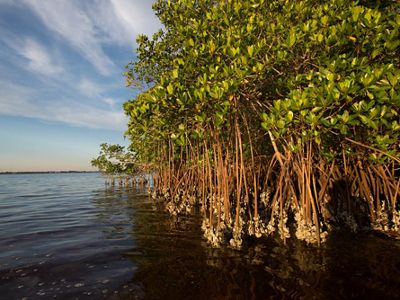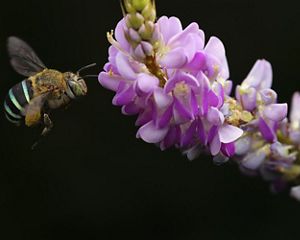This article is part of a series by the Organisation for Economic Co-operation and Development (OECD) in which experts and thought leaders—from around the world and all parts of society—address the COVID-19 crisis, discussing and developing solutions now and for the future.
In the wake of COVID-19, national governments and public development agencies are pumping trillions of dollars into healthcare, immediate unemployment relief and other direct economic support measures. But so far, proposed “green recovery packages” have fallen short. Of the US$14.9 trillion stimulus announced to date, only $1.8 trillion (at the time of analysis) was “green” enough to reduce greenhouse gas emissions or enhance nature and biodiversity.
We are witnessing one of the fastest economic transitions ever known—but there is still time to incorporate nature-positive recovery plans that support a more resilient future for people, the planet and economic prosperity.
Our global insights, straight to your inbox
Get our latest research, perspectives and solutions to today’s sustainability challenges.
Sign UpEvidence suggests that investing in a nature-positive recovery will pay back over the long term. In addition to ensuring a habitable planet for all life on Earth, a systemic transformation to a nature-friendly economy could create 395 million jobs and deliver $10.1 trillion of economic value by 2030, according to the World Economic Forum.
We have an enormous opportunity to rethink how and where money is channeled to shift our systems in a way that restores the planet, and delivers life supporting services to people.

Consider agriculture subsidies: approximately $500 billion in agricultural subsidies worldwide perpetuate unsustainable food and land use systems, which lead to environmental degradation, poor nutrition and income inequality. If we do nothing about the way we produce and consume our food, it will amount to damage estimated to cost $16 trillion each year by 2050. However, by redirecting harmful subsidies toward sustainable practices, including regenerative agriculture, governments can accelerate international climate and biodiversity progress. This shift could provide 40 percent of the funding we need to protect and restore nature—without having to generate new funding streams. We need to see more of these shifts, and we need them urgently.
Two components can ensure a truly green and nature-positive recovery. The first is a rapid transition to low-carbon economies. The second is funding and scaling nature-based solutions that can deliver climate mitigation and adaptation benefits as well as a wide range of vital infrastructure services, such as improved water quality, flood control and disaster risk reduction—all while also benefitting biodiversity.

Nature-based solutions can build resilience in the face of systemic shocks in our economies and ecosystems. For example, studies show that conserving and restoring wetlands, salt marshes and mangroves is one of the most cost-effective ways to protect coastal areas from storms and floods. After Hurricane Sandy hit the northeastern United States in 2012, TNC scientists in partnership with Lloyds of London found that coastal wetlands prevented more than $625 million in potential property damages by absorbing wave energy and reducing storm surge.
Forests offer another big opportunity. Large-scale forest restoration of at least 350 million hectares by 2030 could generate $170 billion per year in net benefits from watershed protection, improved crop yields and forest products—while sequestering more than 5 billion tons of carbon emissions each year.
Quote
We have an enormous opportunity to rethink how and where money is channeled to shift our systems in a way that restores the planet, and delivers life supporting services to people.
The G7 Summit in June is a critical opportunity to shift narratives and policies. G7 countries can show global leadership in greening their recovery efforts and overall economies by:
- Ensuring that all infrastructure investment considers green and hybrid alternatives, and apply the mitigation hierarchy (avoid, minimise and offset impacts) to all new investment;
- Committing to systematic audits of their food-systems subsidies, following OECD guidelines, and pledging to reduce or redirect at least the most harmful subsidies to support regenerative agriculture and nature-positive outcomes;
- Agreeing to explore trade measures to ensure that all forest-risk commodities imported into their countries are deforestation-free;
- Doubling foreign aid flows for nature to help developing countries leverage private and domestic resource flows, as well as dedicating 30 percent of climate aid for nature-based solutions.
If we are to mitigate the climate crisis, reduce inequality, stabilise economies and feed a growing global population, we must protect, restore and sustainably manage nature. The devastation of the COVID-19 pandemic provides an opportunity to chart a new course—one where we do more for the natural systems that are the foundation of a healthy society.
Originally Published at OECD
April 20, 2021
View Original
Global Insights
Check out our latest thinking and real-world solutions to some of the most complex challenges facing people and the planet today.




